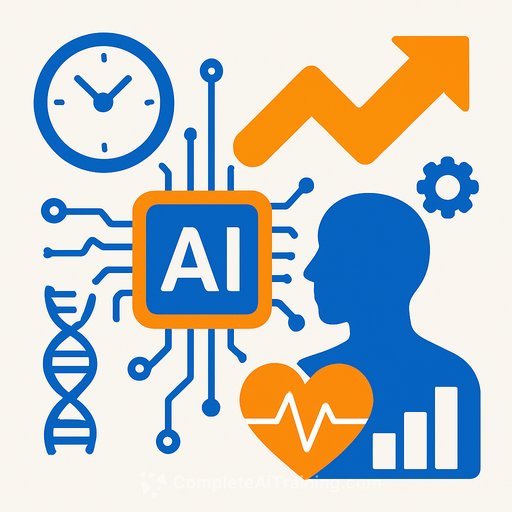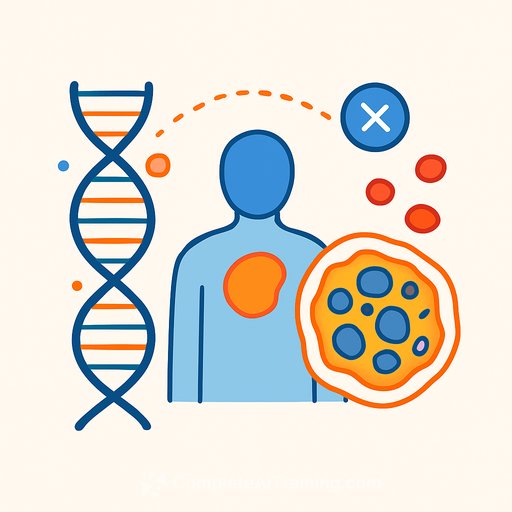AI is pushing longevity science forward - but the data isn't ready
AI is giving aging research new traction, from target discovery to trial design. Yet panelists at the Fortune Global Forum in Riyadh were clear: the limiting reagent is data. We don't have enough depth, breadth, or diversity to train reliable models or run decisive studies.
On stage: HRH Princess Dr. Haya bint Khaled bin Bandar Al Saud of Hevolution Foundation, Alex Zhavoronkov of Insilico Medicine, and Sophie Smith of NABTA Health. Their message to researchers and funders was blunt-collect better data earlier, include everyone, and align biomarkers to outcomes that matter.
The bottleneck: depth and breadth
"Data is the key. The depth of biological data, the depth of demographical data, the depth of epidemiological data has to be properly collected," said HRH Princess Dr. Haya bint Khaled bin Bandar Al Saud. Today's healthcare system screens late, which starves models of longitudinal signals.
"No one can say how young we should start screening for aging. But aging starts at a very young age, it's not when you hit 60," she said. The implication for labs: recruit earlier, run longer, and standardize multi-omic and phenotypic measures across sites.
Dual-purpose drug discovery
Insilico Medicine is pursuing protein targets that can hit disease and aging in the same program. "We're looking for protein targets and drugs that may work on a disease and work on aging at same time," said founder and CEO Alex Zhavoronkov, noting 30 AI-based projects in motion.
He framed the next milestone: the first AI-discovered drug approved for a disease that also shows credible reversal of aging biomarkers in a trial. Don't expect several breakthroughs in the next decade, he cautioned, but over 20 years he expects "many many dramatic events."
Gender, geography, and the missing 99%
LLMs can surface patterns in literature and clinical notes, said Sophie Smith. But gaps in the underlying data distort the outputs. Until 1993, most clinical trials enrolled only men. Even now, the bulk of trials run in the U.S. and Europe, leaving huge segments underrepresented.
"Fewer than 1% of clinical trial participants today are women of Middle East, South Asian, and African origin," she said. That's not a footnote. Men and women age differently. The common assumption-80-year lifespan with about 60 healthy years and the last quarter in poorer health-"only applies to men." Women often spend the middle 60% in relatively worse health due to hormonal shifts and diagnostic delays, with the final 30% relatively better. For women, "it's not about extending life, it's about reclaiming it."
What to do next: a practical playbook for labs and funders
- Build earlier, diverse longitudinal cohorts. Start before midlife. Pair clinical, multi-omics, imaging, and continuous sensor data. Use privacy-preserving methods (e.g., federated learning) to widen access without moving raw data.
- Standardize measurement and metadata. Agree on core biomarker panels, aging clocks, imaging protocols, and environmental exposures. Publish protocols and data dictionaries to reduce batch effects.
- Fix inclusion at the source. Incentivize recruitment in the Middle East, South Asia, and Africa. Stand up community sites, bilingual consent, and mobile phlebotomy. Track and report enrollment by sex and ancestry.
- Tie biomarkers to outcomes. Pre-register endpoints that matter: morbidity compression, functional status, and validated quality-of-life measures. Train models on labels clinicians trust, not just proxy clocks.
- Instrument the exposome. Capture air quality, nutrition, shift work, and socioeconomic context. Aging isn't only biology; models need the context to be credible.
- Govern data use. Modern consent, audit trails, and bias monitoring. Use synthetic data carefully and validate against held-out real cohorts.
- Deploy AI where it compounds now. Target ID from multi-omics, generative chemistry for series expansion, adaptive trial design, site selection, and patient stratification. Measure time-to-IND and phase transition rates.
Metrics that signal real progress
- Share of participants from non-U.S./EU sites and proportion of women by ancestry
- Median age at first aging screen and follow-up duration per participant
- Number of open, well-annotated aging datasets released each year
- Externally validated aging biomarkers linked to clinical outcomes
- AI-discovered candidates entering Phase I/II and time from target to IND
Where funders are leaning
Hevolution is channeling capital into "healthspan"-reducing age-related disease burden and speeding access. The throughline across the panel: invest in data systems first, then scale AI. Models improve fast once the inputs are clean, deep, and diverse.
Further reading
For teams upleveling AI skills
If your group is building models for target discovery, biomarker validation, or trial ops, structured training shortens the learning curve. See a curated list of latest AI courses relevant to data analysis, modeling, and applied ML.
Your membership also unlocks:






